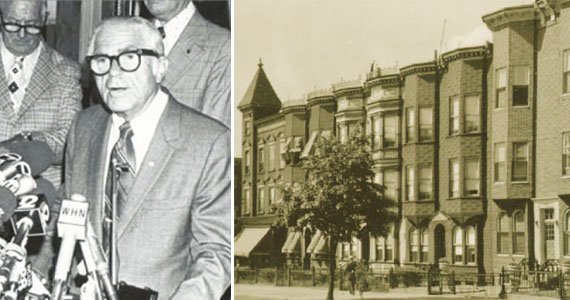Trending
This month in real estate history
This month in real estate history

1974: Crime rampant in West Side SROs
Two murders in early June brought new attention to the high crime rate in West Side single-room occupancy hotels, 41 years ago this month.
One was in the West Side Towers, a 584-room SRO at 235 West 75th Street, at Broadway, which police said was a hotbed for crime in the area.
The issue of crime in SROs was pressing at the time, as the city teetered on bankruptcy and formerly grand apartment buildings were cut up into small rooms let to poor New Yorkers.
The new mayoral administration of Abraham Beame said it was continuing the work of the previous mayor, John Lindsay, who launched an SRO task force to address problems with such buildings. But one critic said, with the government turnover, “everything dropped dead momentarily.”
Police records showed more than 60 major crimes had been committed within the three buildings that made up the West Side Towers, from Jan. 1 through the start of June that year.
Advocates sought to convert the West Side Towers and other SROs to housing for the elderly and to tighten oversight. Instead, the buildings were sold to a developer several years later and converted to 220 rental units with a new name: The Astor.
In December 2013, developer HFZ Capital Group purchased the Astor for $119 million, and has since converted it to condominiums. Last month, there were 20 apartment units listed for sale on StreetEasy with an average price of more than $2,300 per foot.
1945: City needs 50K mid-priced apartments
Weeks after the end of World War II in Europe, a city official estimated that New York needed at least 50,000 moderately priced apartments in order to alleviate an acute housing crisis, 70 years ago this month.
The city sought apartments that would rent for between $35 and $65 per month. Joseph Platzker, an assistant commissioner for housing who led the city’s Vacancy Listing Bureau, told a group of bankers that the fastest way to fill the need was to rehabilitate aging apartments, considering the shortage of construction materials.
Later that month, Platzker identified 15 neighborhoods in Manhattan, Brooklyn and Queens where the existing housing stock could be modernized, including Greenwich Village, West Harlem, Williamsburg, Bushwick, Long Island City and Jamaica.
1904: Syndication backlash
The lead developers of a hotel project on a prime Midtown parcel at 529 Fifth Avenue and the corner of 44th Street bought out a series of smaller co-investors in a sign of the limits of syndication, 111 years ago this month.
A group of investors led by Century Realty paid approximately $1 million in 1902 for the parcel across the street from Delmonico’s Restaurant, in a deal syndicated to an undisclosed number of participants.
But just two years later, Century Realty, whose primary investor was from Vermont, bought out the smaller investors, in what was considered at the time a sign that large and complex projects such as this were ill-suited for syndication, because many parties needed to be included in the decision-making process. The hotel ultimately was never built.
Another example of the failure of syndication at the time was in a neighborhood now known as Lincoln Square. There, a group purchased parcels on the west side of Broadway, between 61st and 62nd streets, but the project dissolved amid a series of lawsuits, and the property was eventually auctioned at a loss.
One skeptic said that for small buildings or for a quick flip, a syndication was useful.
But large development syndicates “usually contain one practical real estate element and several capitalists. The latter generally cause the trouble.”
Compiled by Adam Pincus




